- Home
- Неизвестный
Baghdad Without a Map Page 4
Baghdad Without a Map Read online
Page 4
“I am Ahmed Mohammed,” he said, giving me the name of perhaps a quarter of the male population of Yemen. Then he reached through the window, opened the door from the outside and vanished into the traffic.
The scenery at least, improved at the edge of town. Sanaa sits in a mile-high plateau, ringed by terraced peaks that climb in broad green stairs to twelve thousand feet or more. High above the road, on fields cut like shelves into the hillside, peasants nudged wooden plows across narrow fields of qat. Deep green and wreathed in mist, the mountains had the sharp, rugged beauty of the Andes.
Half an hour out of Sanaa, I reached the first military roadblock: four bullet-riddled oil cans guarded by the tallest Yemeni I'd yet seen. Standing seven feet at least, immobile in his helmet and fatigues, the soldier was cut from cardboard. The real soldiers were laid out in a roadside booth, chewing qat. One of them raised his head and lazily waved me through.
Soon after, just outside the town of Raydah, I hit another traffic jam: a long line of donkeys, their riders perched on saddles of qat. They were headed in to sell their produce at a bustling street market, which also offered slabs of liver, bunches of grapes and huge leaves of cured tobacco. I parked and walked through the bazaar, trying to avoid the evil green shrub.
“Best qat in Yemen—it grows near here.” There was a teenager at my elbow, following me through the bazaar. “You like buy?”
“No, thank you.”
“You like tour Raydah?”
Abdul was seventeen and anxious to practice his English. I was anxious to practice mine, and to get away from the qat. So we headed off through the village.
“This Raydah main street,” he said proudly. We stood before a jerry-built slum of mud brick and concrete, with metal sheets and odd bits of wood tacked this way and that. It looked raw and unfinished, on the way to being old and unfinished.
A black woman with nose rings and neck rings walked a camel down the middle of the road, balancing a basket on her head. Abdul said she was a Tihama, from the Red Sea coast where the Arab world meets the African. I couldn't take my eyes off her face—one of the few exposed females I'd seen in Yemen. Then I spotted another unveiled woman and two others with half-veils.
“Village not like city,” Abdul explained. “Every person know every person. Why need hide?”
The men, at least, wore the usual accessories: turban, jambiya and cow's cud of qat. Mindful of my mission, I asked Abdul why everyone carried a dagger.
“Yemen not safe,” he said. “And Yemen is very proud history, we learn always in school.” From the vantage of Raydah's main street, with its tumbledown buildings and qat-wasted fields, things didn't look so proud. But Arabs have long memories. Yemen was one of the few pockets of Arabia that was never fully conquered or colonized. The Romans came, saw and left. The Ottoman Turks managed a beachhead, as did the British, and they divided the country into North and South Yemen before being driven out. Only qat had successfully subdued the population.
The jambiya was a symbol of that defiance. Why, I asked Abdul, didn't he wear one?
“It is at my home,” he said, blushing. He'd taken it off that morning before school, where weapons are forbidden. “Also not allowed at courts and hospitals,” he said. On airplanes the weapons had to be checked in before takeoff. Everywhere else, Yemenis carried daggers the way Western men carry wallets.
Abdul had one other sight to show me. We hiked down a dusty lane to a mud house at the edge of the village. Two men sat in front, banging small tacks into the soles of leather sandals. They wore skullcaps rather than turbans and tight ringlets of hair drooped down around their ears. Like Abdul, they didn't wear jambiyas.
“This is Ezra and this is Ibrahim,” Abdul said, introducing me. “They are Yahoodim of Raydah.”
I had read that there were still a few thousand Jews in Yemen but I hadn't expected to find them here, on the muddy back lane of a highland village. Nor had I expected them to look as they did. Except for their headdress, these dark-skinned, Arabic-speaking, qat-chewing cobblers in grubby shifts and sandals were indistinguishable from their Muslim neighbors.
I didn't fit their image of a Jew, either, despite my repeated statements that this was so. The two men stared at this fair-skinned stranger in khakis. “Yahood? Mish mumkin.” Jew? Not possible.
I tried to sketch some Hebrew letters in the dust. Ezra studied the crude dust doodles and shook his head. “Mabiki-lemsbee ingleesie,” he said. I don't speak English.
One of Ezra's boys went inside and returned with a thick tattered book. Inside it were pages of Hebrew prayers and the address of a congregation in Brooklyn. Ezra said it had been sent to a Jew in Sanaa some years before. When I began reading aloud in Hebrew, his eyes opened wide. “Kamen,” he said. Again. I read another verse, and a third. Women in odd veils that covered only their mouths were called out of the house to bear witness.
“Hoa Yahood!” one of the young boys cried. He is a Jew.
Ezra spit qat juice in the dust. “Mumkin” he said. It is possible.
I asked the brothers if they wanted to go to Israel. They stared at the ground, uneasy. Going to Israel wasn't mumkin. The government forbade it. I learned later that several thousand Jews were held behind when Operation Flying Carpet airlifted fifty thousand others from Yemen to Israel in 1950. Yemen wanted them for their skills as craftsmen, and also as a bargaining chip with the fledgling Jewish state.
After fifteen minutes, we'd exhausted our common stock of Arabic and Hebrew and reached the limits of Abdul's talents as a translator. I took a photograph of the children. The children took my pens. And Ezra handed me a few sprigs of qat, insisting that I come celebrate the Sabbath with his family next time I happened to be passing through Raydah.
North of Raydah, the road climbed steeply between sawtooth crags topped with turrets of mud. Crude huts with tiny windows clung to the mountainside. They looked like small family garrisons, built for defense rather than for comfort. The road also appeared battle-worn. Cracked and thin, the tar wound up and around the ridges without even a metal rail between the road and the thousand-foot plunge into an adjoining ravine. Qat-addled drivers screamed past on blind hairpin curves, kicking up hails of gravel and dust. Pulling off the road to let a few pass, I peered over the cliff edge and saw heaps of twisted metal lying at regular intervals along the floor of the ravine. Tiny at this height, the ruined cars looked like so many crushed beer cans tossed from the windows of passing trucks.
By the time I reached the next village, Khamir, it was clear that I'd left the semicivilized plateau and entered the uncivilized mountains of the “people too much bad” the car agent had warned about. At a roadblock just outside Khamir, there were two men in uniform and six others out of uniform, all well armed. The six were apparently local tribesmen, sharing watch with the army for unwelcome visits by enemy clans.
The village itself seemed outside the orbit of central government. Few cars and trucks had license plates, and there was no arms control at all. In addition to carrying jambiyas, most men had assault rifles slung over their shoulders, pistols jammed in their belts and bandoliers slung across their chests.
Nor was it hard to locate the source of all this firepower. Sidling up behind a dozen men window-shopping on the main street, I gazed through the glass at a display of Kalash-nikov AK-47 assault rifles. Curiously, the sign above the shop advertised it as a money changer's; weapons were either a sideline or the money changing was a very transparent fig leaf for the brisk trade in arms.
Inside, a man sprawled languidly across several burlap sacks, smoking a water pipe and grinning, like a fat Cheshire cat. Behind him on the wall was a poster of an alluring woman with faraway eyes, her veil pulled completely away from her face. Yemeni pinup.
The merchant addressed me in German, then, when I looked at him blankly, in English. “I am Mohammed, at your service,” he said, straightening his turban. “You want change money? You want sugar?” He paused. “You want bayonet?”
“Something big, maybe?” Mohammed asked. He opened a cabinet to reveal a small arsenal of automatic weapons. “One thousand two hundred riyals,” he said, gesturing at a Belgian FN rifle. Then he reached under the counter for a Turkish musket that looked as though it had done service in the Siege of Constantinople. It weighed roughly a hundred pounds. “This one very cheap, only three hundred riyals.”
“Very nice.” I gave Mohammed the gun and another noncommittal smile.
He nodded knowingly and opened a drawer. “These just in from Iran,” he said, dropping a plump green grenade in my hand. “For you I make a special deal.”
Mohammed's prices did seem rather special. Only $20 for the grenade, $5 for a bayonet and $120 for an assault rifle. A man could play Rambo for less money than he paid for a week's worth of qat.
I asked Mohammed where all the weapons came from.
“Libya, Djibouti, Egypt, Iran—we like all country. It go bang, it go boom, we buy.” He flashed me another Cheshire-cat grin. “You like grenade. What is two hundred riyals to a rich man?”
I still had the explosive in my hand, afraid even to hand it back to him. “Maybe another day,” I said.
Mohammed shrugged and plucked the grenade from my palm. “Other villages, you find grenades only at Friday market. At Mohammed's, every day.”
At this point I half expected him to hand me a promotional flier. Free Bayonet with Every Sack of Sugar! Grenades Every Day! These Just in from Iran! I changed twenty dollars at a favorable rate, climbed back in the car and headed deeper into the hills.
The road north from Khamir led through villages with names that sounded like dog barks: Huth, Hamra, Harf. Mohammed was right, grenades only on Fridays. But at Huth there were M-14 submachine guns smuggled from Afghanistan, on sale in the hardware section of a general store. At Harf, a man took me to his house to show off World War H-vintage artillery shells. At Hamra a man tried to peddle land mines from Ethiopia, though he said I had to order them a few days in advance. It seemed that weapons from every insurgency over the past fifty years had washed up in the mountains of Yemen, on special. Nor did anyone seem particularly curious about a Westerner rolling into town and asking where to buy a bandook (rifle), a genable (grenade) or even a dababat (tank).
“One dababat in this region belongs to Sheik Salah Hindi,” said the mine merchant in Hamra. “He keeps it at home. Not for sale, I think.”
The landscape north of Hamra was poorer and more threatening. At some roadblocks there were no soldiers at all, just ragged men in skirts and turbans, hunched over submachine guns in the rear of open trucks. The only other traffic was the occasional teenage goatherd, coaxing his flock across the road with tossed stones or the nudge of a rifle butt. One shepherd appeared to be no older than twelve, standing roughly the height of the assault rifle he dragged along the ground. As his goats blocked the road, I climbed out and tried to make chat in kindergarten Arabic.
“Beautiful gun, very beautiful,” I said, giving my one Arabic adjective a workout. He looked at me strangely. Pale dude in beat-up car, grinning madly and mumbling something about guns. I offered him a Pepsi and he popped off the cap with the muzzle of his Kalashnikov.
“Beautiful gun,” I said again. “It work?” Then, to make my point clearer, I pressed an imaginary trigger and went “Bang bang.” I was trying to establish if it was possible that a prepubescent goatherd was toting a loaded automatic weapon.
The boy shrugged, raised the barrel and pumped several rounds into an abandoned roadside hut. Dried mud chipped off and scattered in the air. The goats skittered across the tar, clearing the highway. I skittered back to my car shouting “Beautiful gun, very beautiful” and shifted from first gear to fourth gear as quickly as I could.
It was dark by the time I reached the city of Saada, 150 miles north of the capital. A mud-walled settlement at the country's northern frontier, it was known as the Dodge City of Yemen, a lawless place where tribal spats sent lead singing through the streets.
“My first year here, there was gunfire all the time,” said a young man named Ali. We were sitting in a teahouse on Saada's main street, talking about his decision to leave the capital for a government job in the north.
“Have you seen anyone killed?” I asked him.
“Only six. But many more injured.”
The worst shootout he'd witnessed occurred one day after work, when he offered a colleague a ride home. A truck pulled alongside Ali's car and two men began shooting rifles through the window. Ali's passenger returned the fire. Before it was over, six people had died, three of them unarmed passersby.
“I think this is too much,” said Ali, who, unlike his passenger, survived the exchange. “Now I give rides only to people I know well.”
Ali said things were getting better. Tribesmen used to travel each weekend to an open-air weapons market in the nearby village of Al-Tuhl, also known for its handwoven baskets. There they could buy grenades by the kilo, like tomatoes, and also pre-order tanks and shoulder-held missile launchers. But the government had recently closed the souk. And tribesmen visiting Saada now had to check their bullet clips at roadblocks outside town, though they were permitted to carry empty rifles through the street.
“It is a way of letting them keep their dignity while taking away their danger,” Ali explained. Even so, two hundred people had been gunned down or stabbed to death in the Saada region the previous year, a rather astonishing figure for an area with a total population of about ten thousand.
After chatting with Ali, I wasn't sure I wanted to hang around town and risk becoming innocent victim number 201. But driving back to Sanaa in the dark, with one headlight, seemed out of the question. So I asked Ali where I should stay for the night. He recommended Saada's finest, the no-star Rahban Hotel. “It is more like a camping ground than a hotel,” he said. “But the other places, well. . .” He left it to my imagination.
The Rahban was as advertised. I had a choice between a two-dollar room with a swampy communal toilet at the end of the hall, or a three-dollar room with a swamp en suite. I treated myself to the latter, which came at least with a toilet bowl and seat.
The toilet didn't flush, however, and judging from its contents, hadn't for some time. I wandered out into the hall and found a sitting room with geological maps spread on the floor and a Yemeni bedded down on the couch. He spoke a little French and explained that foreigners with trucks and drills had left the maps there that morning. They were either Italian or German or English, he wasn't sure. They were searching for either gold or silver or gas, or maybe something else. He went back to sleep.
It wasn't hard to fill in the blanks. Oil had just begun flowing through pipelines farther south; now even distant Saada was awash with prospectors as well.
I awoke late the next morning to the sound of automatic gunfire. With the special sickness of the scoop-hungry journalist, I heard in the rat-a-tat the rhythm of a headline: SHOOTOUT IN SAADA. Rushing to the window, I located the gunslingers just below. A boy of about ten was tearing pages from a magazine and pinning them to the mud wall of the old city. Then he and a middle-aged man took turns pumping lead into the pages with a huge automatic pistol. It was a touching scene, in a Yemeni sort of way; father and son, on a bright Sunday morning, out for target practice in Saada. The father seemed particularly pleased with a series of head shots drilled into what looked like a photograph of the Yemeni president.
Downstairs, I dug into flat bread and. . ., the ubiquitous Arab breakfast of slow-cooked fava beans. Mashed and marinated with hot spices and lime, the ful tasted like a week-old burrito. “If your friend is as sweet as honey, don't taste him all at once,” read the proverb heading the chapter on Saada in my Traveller's Guide, which I perused over breakfast. The book didn't mention that Yemen is home to thirty-four types of stomach parasite.
Living dangerously, I washed down the ful with lukewarm tea that seemed not to have boiled, then pushed open the saloon-style doors leading into the street.
By day, Dodge City was disappointing. Its straight and dusty main street looked the part. But at high noon the only dueling was between a pair of mangy dogs, humping in the road. A merchant paused to watch, then resumed scrubbing a stain of qat spittle from the sidewalk in front of his shop.
The main road ended at the gate to the old city. At first it looked like a miniature Sanaa, with clay walls and fanciful mud towers topped in stained glass and gypsum. But most of the towers seemed to squat rather than soar. Urine trickled from holes in the upper floors, a primitive sewage system that relied on the hot sun to dry waste water as it dribbled down.
From atop the ramparts there was still a glimpse of former glory. A cleft in the mountains marked the site of an ancient trade route, along which passed caravans of myrrh and frankincense on their way to the Mediterranean port of Gaza. Muslim pilgrims also followed the road north to visit Mecca, just over the mountains. Their gravestones, covered in calligraphy, massed outside Saada's walls, facing the holy city.
These days, thousands of Yemenis made the pilgrimage to Saudi Arabia for worldlier gain. They went to do the kingdom's dirty work, returning with enough petrodollars to buy a home, a wife, a higher grade of qat. The old city of Sanaa seemed resilient enough to survive the onslaught of modern ways. But here in Saada, the mud towers were neglected, the dirt streets littered with paper, polystyrene and crushed aluminum cans. From atop its eroded walls, Saada had the precarious feel of a city that the next hard rain might wash away.
Descending into the old city's bazaar, I spotted men with skullcaps and ringlets of hair, hawking silver jewelry. They squatted at the fringes of the market, displaying their earrings in the dust. Other Jews labored in dark stalls, craft-ing scabbards for the daggers they were forbidden to wear.

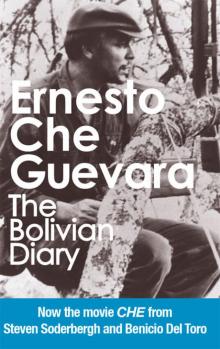 The Bolivian Diary
The Bolivian Diary Caffeine Blues_ Wake Up to the Hidden Dangers of America's #1 Drug ( PDFDrive )
Caffeine Blues_ Wake Up to the Hidden Dangers of America's #1 Drug ( PDFDrive ) The Empty House
The Empty House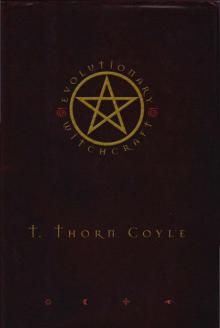 T Thorn Coyle Evolutionary Witchcraft (pdf)
T Thorn Coyle Evolutionary Witchcraft (pdf)![K J Emrick & Kathryn De Winter - [Moonlight Bay Psychic Mystery 01-06] - A Friend in; on the Rocks; Feature Presentation; Manor of; by Chocolate Cake; A-Maze-Ing Death (retail) (epub) Read online](http://freenovelread.comhttps://picture.efrem.net/img/nienyi/k_j_emrick_and_kathryn_de_winter_-_moonlight_bay_psychic_of_by_chocolate_cake_a-maze-ing_death_retail_epub_preview.jpg) K J Emrick & Kathryn De Winter - [Moonlight Bay Psychic Mystery 01-06] - A Friend in; on the Rocks; Feature Presentation; Manor of; by Chocolate Cake; A-Maze-Ing Death (retail) (epub)
K J Emrick & Kathryn De Winter - [Moonlight Bay Psychic Mystery 01-06] - A Friend in; on the Rocks; Feature Presentation; Manor of; by Chocolate Cake; A-Maze-Ing Death (retail) (epub)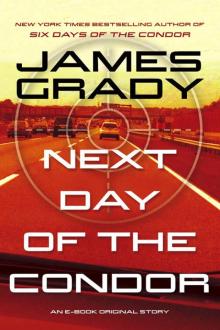 Next Day of the Condor
Next Day of the Condor Onyx
Onyx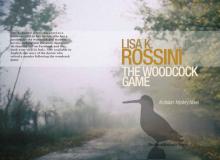 The Woodcock Game: An Italian Mystery Novel
The Woodcock Game: An Italian Mystery Novel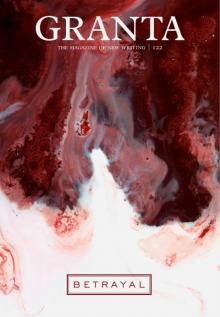 Granta 122: Betrayal (Granta: The Magazine of New Writing)
Granta 122: Betrayal (Granta: The Magazine of New Writing)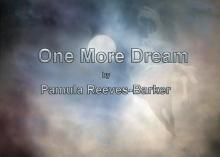 One More Dream
One More Dream Cosa Nostra by Emma Nichols) 16656409 (z-lib.org) (1)-compressed
Cosa Nostra by Emma Nichols) 16656409 (z-lib.org) (1)-compressed Cowboy by J. M. Snyder
Cowboy by J. M. Snyder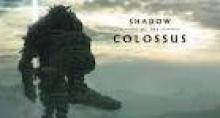 Colossus
Colossus Star Trek - DS9 011 - Devil In The Sky
Star Trek - DS9 011 - Devil In The Sky Fright Mare-Women Write Horror
Fright Mare-Women Write Horror The Future Is Japanese
The Future Is Japanese In the Witching Hour
In the Witching Hour Mammoth Books presents Wang's Carpets
Mammoth Books presents Wang's Carpets The Cradle King: The Life of James VI and I, the First Monarch of a United Great Britain
The Cradle King: The Life of James VI and I, the First Monarch of a United Great Britain Stalking Moon
Stalking Moon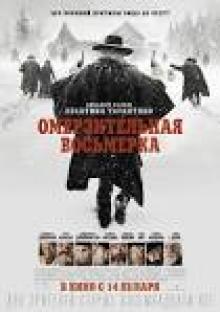 Hostage To The Devil
Hostage To The Devil![Harris, Daisy - Mere Passion [Ocean Shifters 2] (Siren Publishing Classic) Read online](http://i1.bookreadfree.com/i/03/23/harris_daisy_-_mere_passion_ocean_shifters_2_siren_publishing_classic_preview.jpg) Harris, Daisy - Mere Passion [Ocean Shifters 2] (Siren Publishing Classic)
Harris, Daisy - Mere Passion [Ocean Shifters 2] (Siren Publishing Classic) Day, Sunny - Hot in Space (Siren Publishing Ménage and More)
Day, Sunny - Hot in Space (Siren Publishing Ménage and More) Five Books Of The Lives, Heroic Deeds And Sayings Of Gargantua And His Son Pantagruel
Five Books Of The Lives, Heroic Deeds And Sayings Of Gargantua And His Son Pantagruel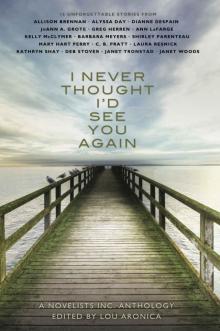 I Never Thought I'd See You Again: A Novelists Inc. Anthology
I Never Thought I'd See You Again: A Novelists Inc. Anthology Billion dollar baby bargain.txt
Billion dollar baby bargain.txt![Chenery, Marisa - Turquoise Eye of Horus [Egyptian Shifters 1] (Siren Publishing Classic) Read online](http://i1.bookreadfree.com/i1/03/26/chenery_marisa_-_turquoise_eye_of_horus_egyptian_shifters_1_siren_publishing_classic_preview.jpg) Chenery, Marisa - Turquoise Eye of Horus [Egyptian Shifters 1] (Siren Publishing Classic)
Chenery, Marisa - Turquoise Eye of Horus [Egyptian Shifters 1] (Siren Publishing Classic) Cat Magic
Cat Magic Star Trek - DS9 - Warped
Star Trek - DS9 - Warped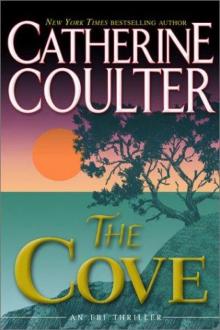 Catherine Coulter - FBI 1 The Cove
Catherine Coulter - FBI 1 The Cove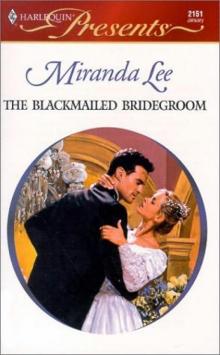 Miranda Lee -The Blackmailed Bridegroom
Miranda Lee -The Blackmailed Bridegroom The Seashell Anthology of Great Poetry
The Seashell Anthology of Great Poetry Dragon Moon
Dragon Moon The Social Costs of Pornography: A Collection of Papers
The Social Costs of Pornography: A Collection of Papers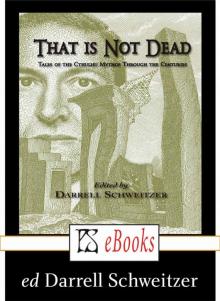 That Is Not Dead
That Is Not Dead Best New Horror: Volume 25 (Mammoth Book of Best New Horror)
Best New Horror: Volume 25 (Mammoth Book of Best New Horror) This Christmas by J. M. Snyder
This Christmas by J. M. Snyder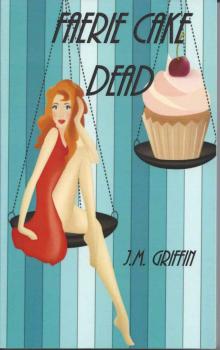 Faerie Cake Dead
Faerie Cake Dead CS-Dante's Twins
CS-Dante's Twins EFD1: Starship Goodwords (EFD Anthology Series from Carrick Publishing)
EFD1: Starship Goodwords (EFD Anthology Series from Carrick Publishing) Echo Burning by Lee Child
Echo Burning by Lee Child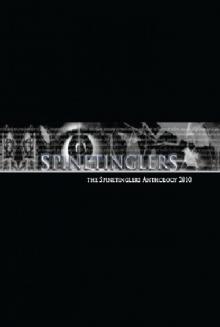 The Spinetinglers Anthology 2010
The Spinetinglers Anthology 2010 Wild Hearts
Wild Hearts Violet Winspear - Sinner ...
Violet Winspear - Sinner ...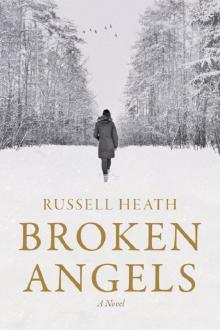 Broken Angels
Broken Angels FearNoEvil
FearNoEvil![Santiago, Lara - Range War Bride [Tasty Treats 11] (Siren Publishing PolyAmour) Read online](http://i1.bookreadfree.com/i1/03/30/santiago_lara_-_range_war_bride_tasty_treats_11_siren_publishing_polyamour_preview.jpg) Santiago, Lara - Range War Bride [Tasty Treats 11] (Siren Publishing PolyAmour)
Santiago, Lara - Range War Bride [Tasty Treats 11] (Siren Publishing PolyAmour) 8 Great Hebrew Short Novels
8 Great Hebrew Short Novels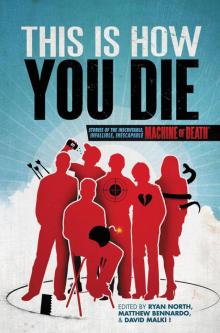 This Is How You Die: Stories of the Inscrutable, Infallible, Inescapable Machine of Death
This Is How You Die: Stories of the Inscrutable, Infallible, Inescapable Machine of Death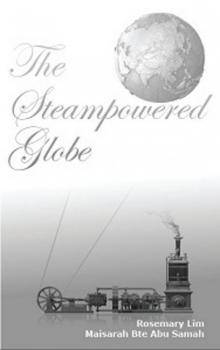 The Steampowered Globe
The Steampowered Globe While We Wait by J. M. Snyder
While We Wait by J. M. Snyder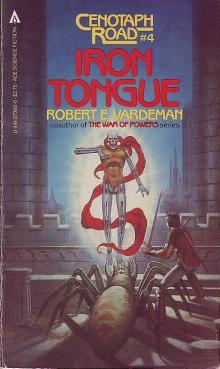 Iron Tongue cr-4
Iron Tongue cr-4![Stieg Larsson [Millennium 02] The Girl Who Played with Fire v5.0 (LIT) Read online](http://i1.bookreadfree.com/i1/03/31/stieg_larsson_millennium_02_the_girl_who_played_with_fire_v5_0_lit_preview.jpg) Stieg Larsson [Millennium 02] The Girl Who Played with Fire v5.0 (LIT)
Stieg Larsson [Millennium 02] The Girl Who Played with Fire v5.0 (LIT)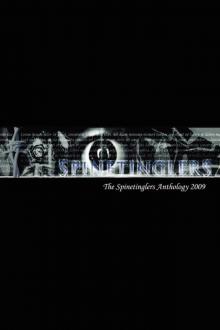 The Spinetinglers Anthology 2009
The Spinetinglers Anthology 2009 Bowles, Jan - Branded by the Texas Rancher (Siren Publishing Classic)
Bowles, Jan - Branded by the Texas Rancher (Siren Publishing Classic) Brown, Berengaria - Vivienne's Vacation (Siren Publishing Ménage and More)
Brown, Berengaria - Vivienne's Vacation (Siren Publishing Ménage and More) Inheritors
Inheritors Arthur Conan Doyle: A Life in Letters
Arthur Conan Doyle: A Life in Letters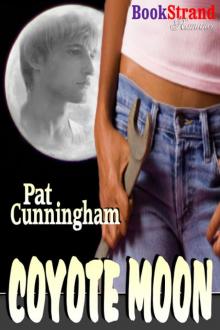 Cunningham, Pat - Coyote Moon (BookStrand Publishing Romance)
Cunningham, Pat - Coyote Moon (BookStrand Publishing Romance)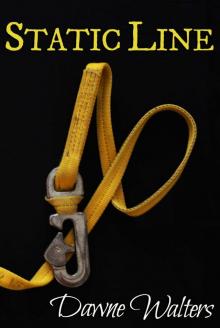 Static Line
Static Line Ghost Mysteries & Sassy Witches (Cozy Mystery Multi-Novel Anthology)
Ghost Mysteries & Sassy Witches (Cozy Mystery Multi-Novel Anthology) Elizabeth Neff Walker - Puppy Love
Elizabeth Neff Walker - Puppy Love Ghosts in the Machine
Ghosts in the Machine Theater of the Crime (Alan Stewart and Vera Deward Murder Mysteries Book 6)
Theater of the Crime (Alan Stewart and Vera Deward Murder Mysteries Book 6) Red Satin Lips, Book One (The Surrender Series)
Red Satin Lips, Book One (The Surrender Series)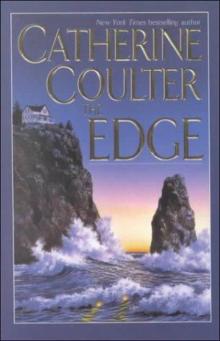 Catherine Coulter - FBI 4 The Edge
Catherine Coulter - FBI 4 The Edge StateoftheUnion
StateoftheUnion Fantastic Women: 18 Tales of the Surreal and the Sublime from Tin House
Fantastic Women: 18 Tales of the Surreal and the Sublime from Tin House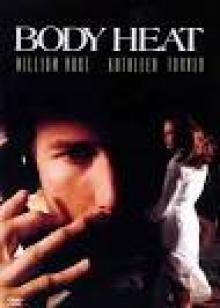 Sara Wood-Expectant Mistress original
Sara Wood-Expectant Mistress original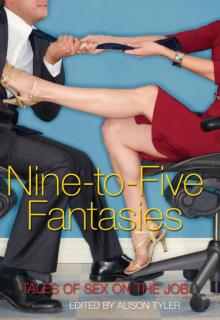 Nine-to-Five Fantasies: Tales of Sex on the Job
Nine-to-Five Fantasies: Tales of Sex on the Job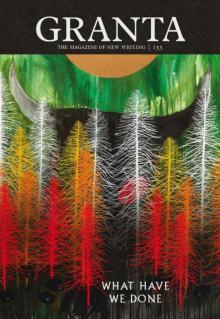 Granta 133
Granta 133 Dream Quest
Dream Quest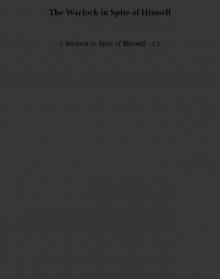 The Warlock in Spite of Himself wisoh-2
The Warlock in Spite of Himself wisoh-2 Glenn, Stormy - Mating Heat (Siren Publishing Ménage Amour)
Glenn, Stormy - Mating Heat (Siren Publishing Ménage Amour) Davis, Lexie - Toys from Santa (Siren Publishing Classic)
Davis, Lexie - Toys from Santa (Siren Publishing Classic) Once Dead, Twice Shy
Once Dead, Twice Shy McSweeney's Enchanted Chamber of Astonishing Stories
McSweeney's Enchanted Chamber of Astonishing Stories Zombies: Shambling Through the Ages
Zombies: Shambling Through the Ages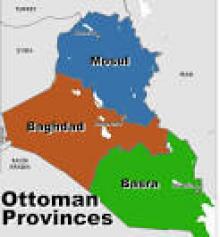 Baghdad Without a Map
Baghdad Without a Map Banshee Cries (the walker papers)
Banshee Cries (the walker papers)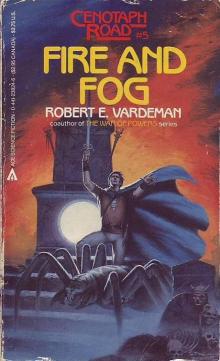 Fire and Fog cr-5
Fire and Fog cr-5 The Twelve Hot Days of Christmas
The Twelve Hot Days of Christmas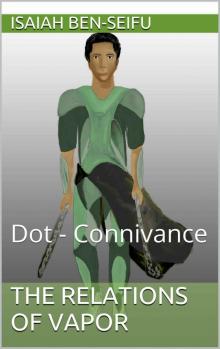 The Relations of Vapor: Dot - Connivance
The Relations of Vapor: Dot - Connivance![Harris, Daisy - Mere Temptation [Ocean Shifters 1] (Siren Publishing Classic) Read online](http://i1.bookreadfree.com/i2/04/11/harris_daisy_-_mere_temptation_ocean_shifters_1_siren_publishing_classic_preview.jpg) Harris, Daisy - Mere Temptation [Ocean Shifters 1] (Siren Publishing Classic)
Harris, Daisy - Mere Temptation [Ocean Shifters 1] (Siren Publishing Classic) World of Mazes cr-3
World of Mazes cr-3 Mistaken Identity (A Jules Poiret Mystery Book 26)
Mistaken Identity (A Jules Poiret Mystery Book 26) Star Trek - DS9 - Fall of Terok Nor
Star Trek - DS9 - Fall of Terok Nor Not Like I'm Jealous or Anything: The Jealousy Book (Ruby Oliver)
Not Like I'm Jealous or Anything: The Jealousy Book (Ruby Oliver) Skaterboy by J. M. Snyder
Skaterboy by J. M. Snyder The Sorcerer_s Skull cr-2
The Sorcerer_s Skull cr-2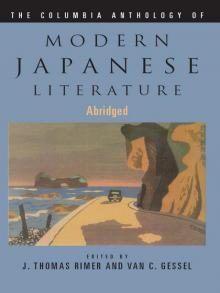 The Columbia Anthology of Modern Japanese Literature (Modern Asian Literature Series)
The Columbia Anthology of Modern Japanese Literature (Modern Asian Literature Series) New Erotica 5
New Erotica 5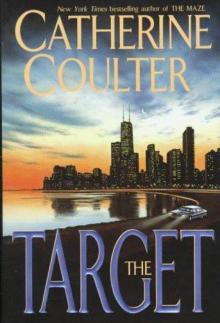 Catherine Coulter - FBI 3 The Target
Catherine Coulter - FBI 3 The Target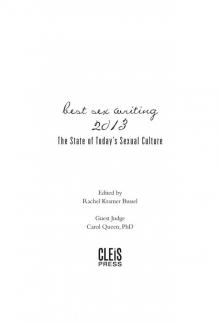 Best Sex Writing 2013: The State of Today's Sexual Culture
Best Sex Writing 2013: The State of Today's Sexual Culture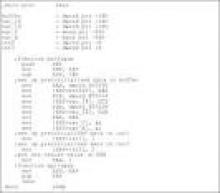 Factoring Humanity
Factoring Humanity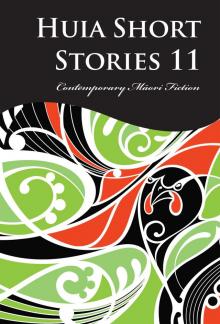 Huia Short Stories 11
Huia Short Stories 11 Call of the Wilds
Call of the Wilds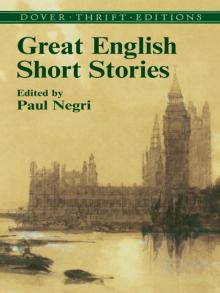 Great English Short Stories (Dover Thrift Editions)
Great English Short Stories (Dover Thrift Editions)![Ramagos, Tonya - Logan's Lessons [Sunset Cowboys 2] (Siren Publishing Classic) Read online](http://i1.bookreadfree.com/i2/04/10/ramagos_tonya_-_logans_lessons_sunset_cowboys_2_siren_publishing_classic_preview.jpg) Ramagos, Tonya - Logan's Lessons [Sunset Cowboys 2] (Siren Publishing Classic)
Ramagos, Tonya - Logan's Lessons [Sunset Cowboys 2] (Siren Publishing Classic)![Morgan, Nicole - Sweet Redemption [Sweet Awakenings 1] (Siren Publishing Allure) Read online](http://i1.bookreadfree.com/i2/04/10/morgan_nicole_-_sweet_redemption_sweet_awakenings_1_siren_publishing_allure_preview.jpg) Morgan, Nicole - Sweet Redemption [Sweet Awakenings 1] (Siren Publishing Allure)
Morgan, Nicole - Sweet Redemption [Sweet Awakenings 1] (Siren Publishing Allure) Warbirds of Mars: Stories of the Fight!
Warbirds of Mars: Stories of the Fight!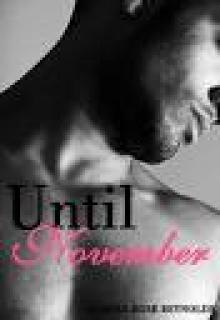 Original Version of Edited Godwin Stories(lit)
Original Version of Edited Godwin Stories(lit) Where The Hell is Boulevard?
Where The Hell is Boulevard?![Chemical [se]X Read online](http://i1.bookreadfree.com/i2/04/13/chemical_sex_preview.jpg) Chemical [se]X
Chemical [se]X Allison Brennan - See No Evil
Allison Brennan - See No Evil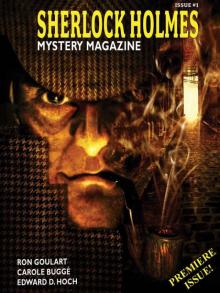 Sherlock Holmes Mystery Magazine #1
Sherlock Holmes Mystery Magazine #1